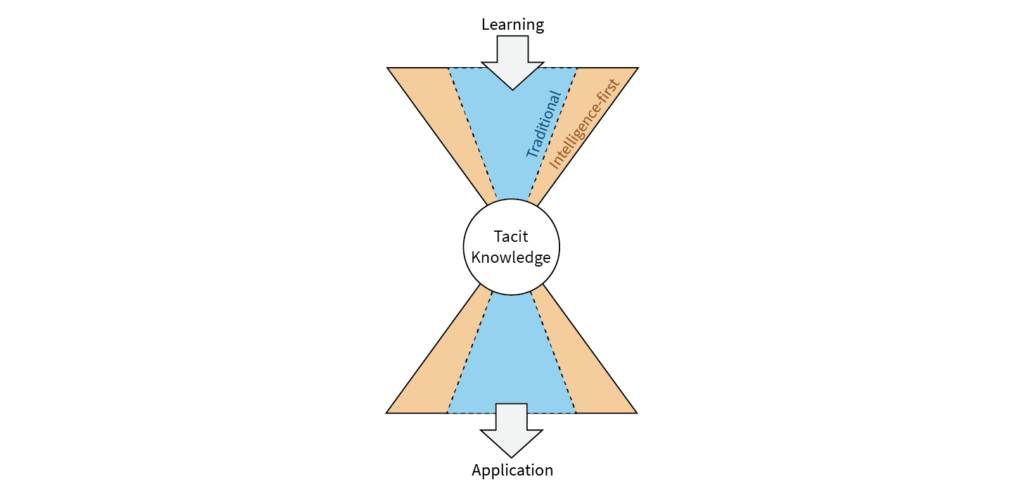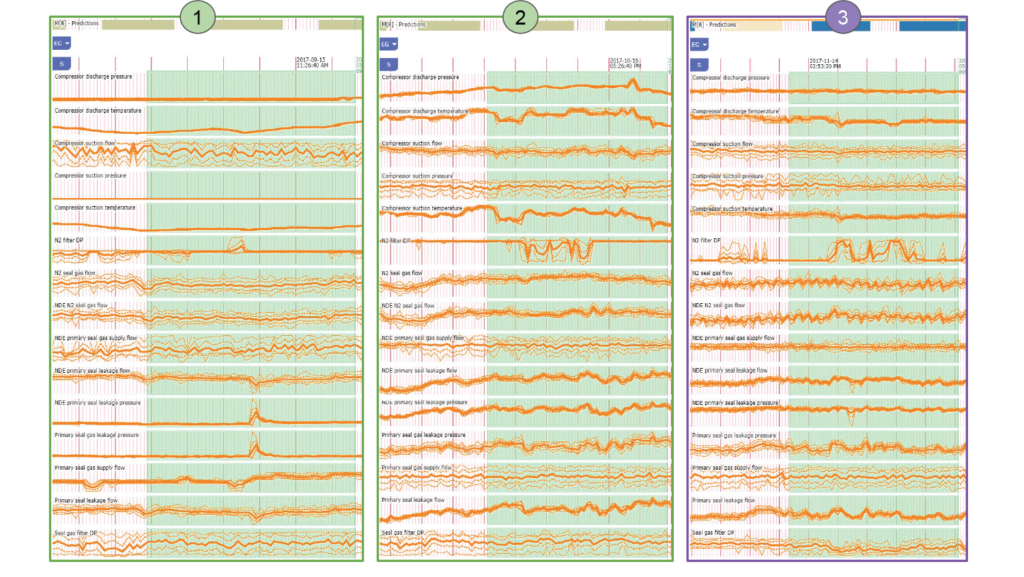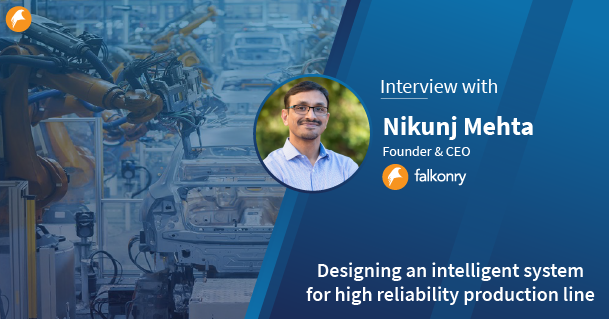How Intelligence-First Leads to Faster Learning and Cost-Effective Scaling
Key takeaways:
- Machine learning provides insights for which there is no conventional equivalent, resulting in more opportunities to learn as well as to improve.
- Incorporating expert knowledge into equipment and process monitoring is key to cost-effective scaling.
- Intelligence-first aims to leverage and amplify human expertise, not to replace it.
The learning machine
People are natural learners. A curious 4-month old baby learns that a toy will move if touched. A toddler learns that the family cat will run away if chased. A terrible two year old learns that the word “no” gets them attention – more so when repeated loudly. We learn through years of school how to best solve math problems. We learn through years on the playground and on the field what we need to do to win a game with our peers. Through years of college we learn how to pass tests and, ultimately, we learn how to accelerate our own learning through formal research and experimentation.
However, we are constrained. We are limited by how many experiences we can have each day. We are also limited in how many problems we can apply that learning to because our knowledge is embodied in us. Increasing our effectiveness means overcoming these constraints. Not that machine learning can or should replace people, but it does offer advantages that help us towards this goal by making collection and usage of tacit knowledge more effective.

Observation through new eyes
With traditional learning, we see what is before us. Let’s look at the case of industrial scale manufacturing and condition based maintenance (CBM). Our eyes, ears, hands and nose can point to failures as they are happening: leaking lubricants, squealing bearings, vibrating motors, burning insulation tell us that something is happening. Likewise, stories from co-workers or records in a log book can tell us what others have observed – the things that failed. We can augment those observational powers with sensors that extend our range of sensitivity to “see” changes in behavior on scales or in wavelengths that we cannot detect unaided. These traditional approaches are good, as far as they go, but having been in use for a long time, the relative advantage of these approaches to observation are diminishing. Fortunately, intelligence-first shows a way forward.
Machines can look at data in ways that humans cannot. Consider Deep Blue and AlphaGo. Both systems view their respective games in ways that are significantly different from humans. In the case of Deep Blue it evaluates the future by rapidly playing out high numbers of scenarios. In the case of AlphaGo it finds links between states of the board and the most likely outcomes. High dimensionality multivariate behaviors in sensor traces don’t stand out as patterns that our brains evolved to detect – co-variations in pressure, temperature and flow rate weren’t relevant to throwing spears at gazelle. For example, it’s not easy to see how the signal behaviors in windows 1 and 2 are different from those in window 3 – but they are. The first two show normal pump operation while the 3rd shows a precursor to seal failure.

Sometimes the patterns are simpler to identify but are hidden within hundreds of other signals. With human methods of attention, it is very easy to miss such patterns.
One of the tenets of Intelligence-first is to deploy machine learning on real production data in order to see patterns of behavior that are otherwise invisible or overlooked. One example of this was a case where Falkonry found unusual patterns of operation in a high temperature conveyance system. Upon review, those patterns were highly predictive of subsequent conveyor failures. The engineering team was unaware of these precursor behaviors and, thus, could not learn from them. By detecting novel patterns in equipment or process and bringing those events to a person’s attention, another avenue of learning and improvement opens – the funnel we use for collecting examples becomes wider, feeding more fuel into the learning machine.
Being forever everywhere at once
When systems or processes are simple or constraints are loose, it doesn’t take much time to expose people to enough examples for them to become effective. However, as processes become more complex, the operating tolerances become tighter and the know-how required for reliable operation increases. While it is possible to hire more people and train them, this is expensive in both time and money. Survival in today’s competitive markets depends on getting to high production volume quickly – “business as usual” won’t scale in the way that is needed for success.
The challenge with business as usual in this context stems from the fact that the expert’s knowledge is inside their head. Because there are only so many experts who have the necessary knowledge, they can only be involved in so many projects in so many areas at one time. By encoding that knowledge into a digital, algorithmically applicable format, it becomes possible to have the experts’ knowledge be everywhere at once. That means:
- Equipment can be monitored for more hours of the day through automated data analysis and notification systems.
- More manufacturing lines can be supported as the knowledge about most important events can be duplicated and distributed.
- More applications within a line can be deployed by enabling teams who lack specific experience to supplement those gaps in knowledge with the digitalized expert knowledge.
The limited number of experts can then focus on issues which only they can address. Combined, these factors increase the size of the output funnel, enabling production at scale without the time or salary cost of hiring and training more experts solely for the purpose of achieving that scale.
A further advantage of capturing knowledge this way is that it creates a digital record of itself. As new events are encountered and learning improves to detect, classify, explain, and estimate these events, an actionable, digital record of the learning is created. This digital form of learning results in knowledge that will never leave for another job and never retire even as it adapts to changing business. This further mitigates the risks that companies face as they evolve, grow, or age.
Is Intelligence-first “better?”
There are many ways to be “better.” If, as observed in the companies we have worked with, the challenge is figuring out how to learn faster and how to apply that learning across more areas in less time using a limited budget, then yes, Intelligence-first is better than more traditional approaches. Increased worker training and employing data scientists to create bespoke models have serious limitations which Falkonry’s approach avoids.
However, Intelligence-first is not meant to replace people, it is meant to empower your people to do more. So no, Intelligence-first is not better than the hard working, knowledgeable, people who make your plant run day-in and day-out. Better, in this case, is more like getting a new pair of glasses and a good work order management system than it is like getting an autonomous robot. With enhanced visibility to events and a smoother way to automate routine tasks, experts can do the things only they can do – and they can do them better than before.





